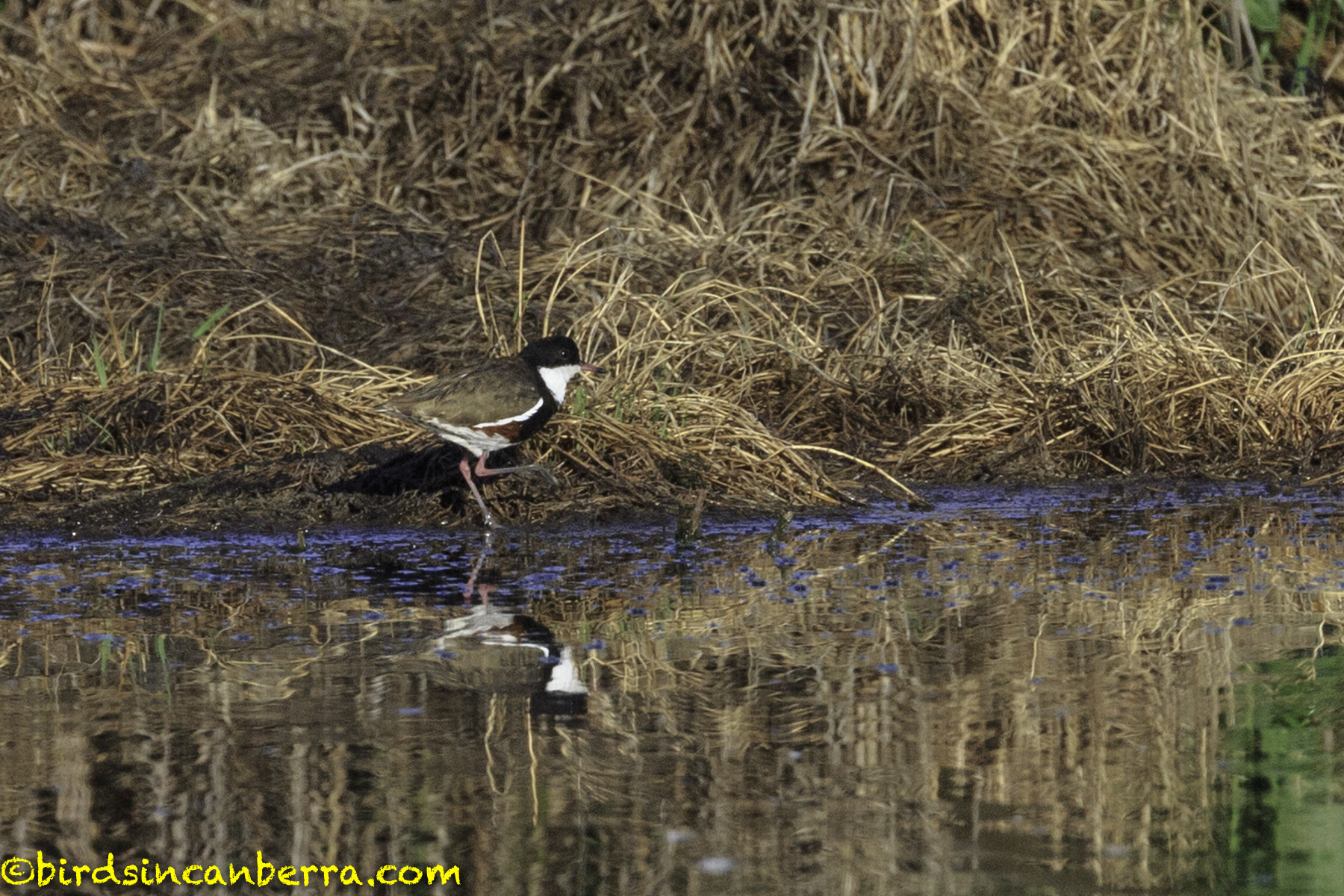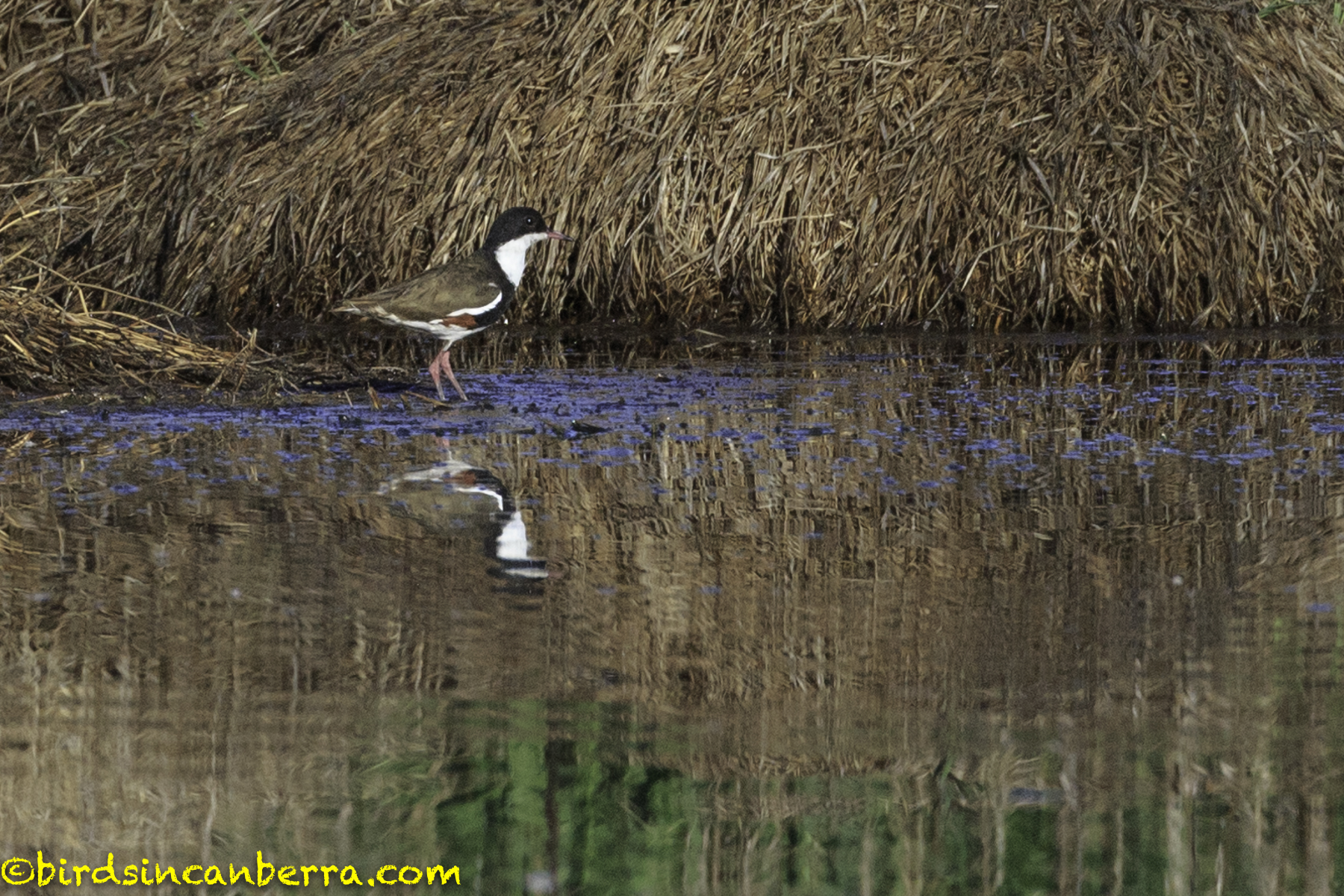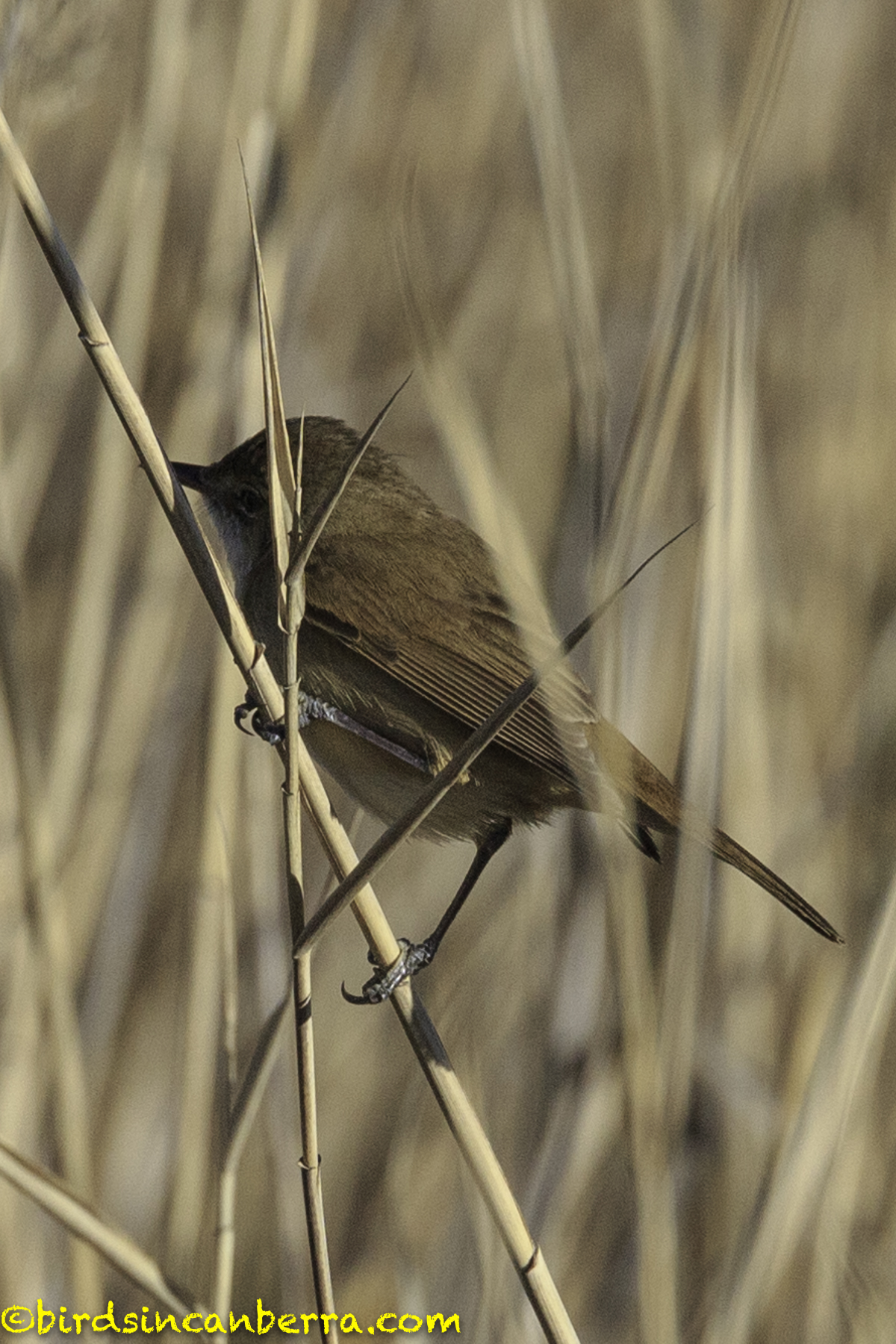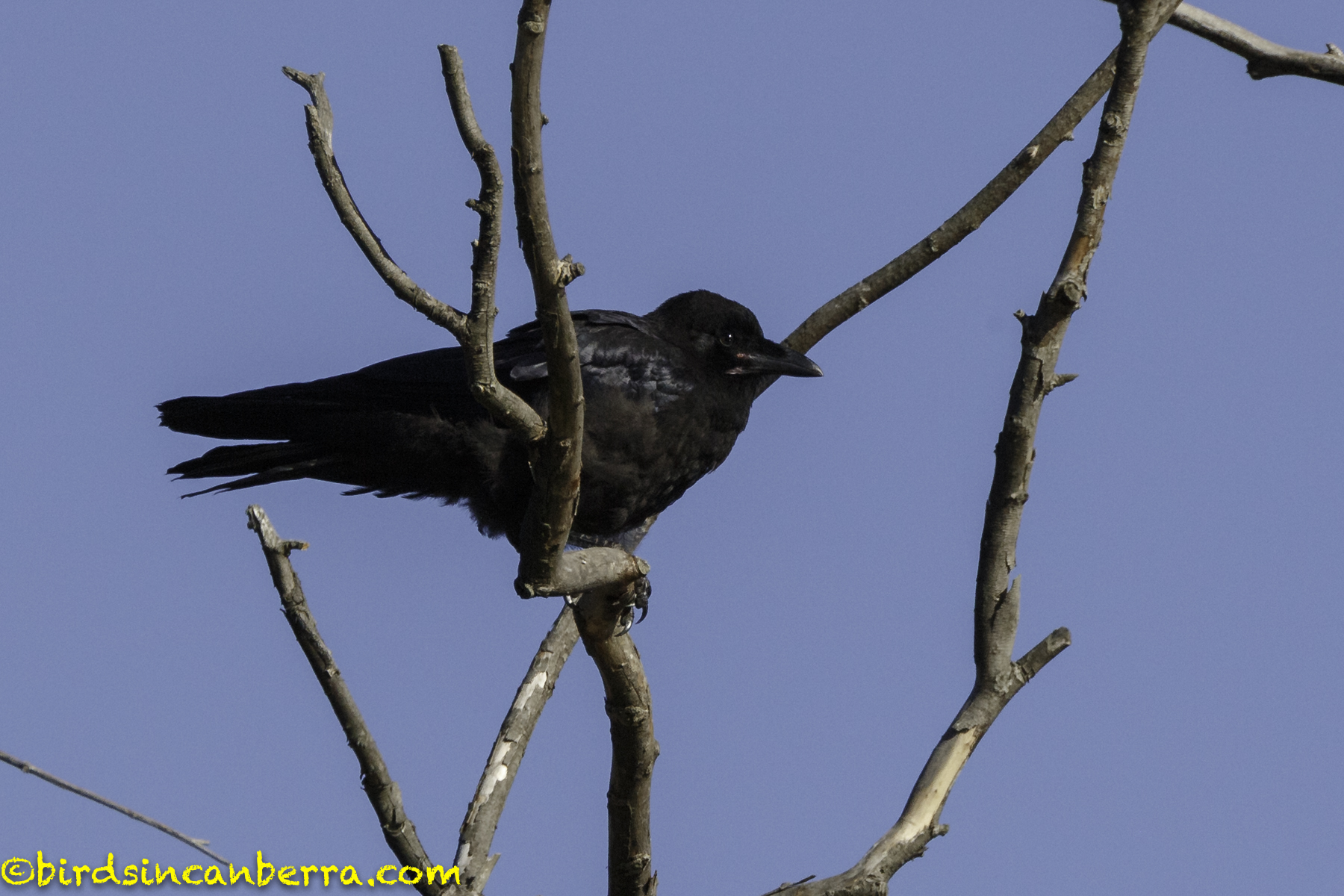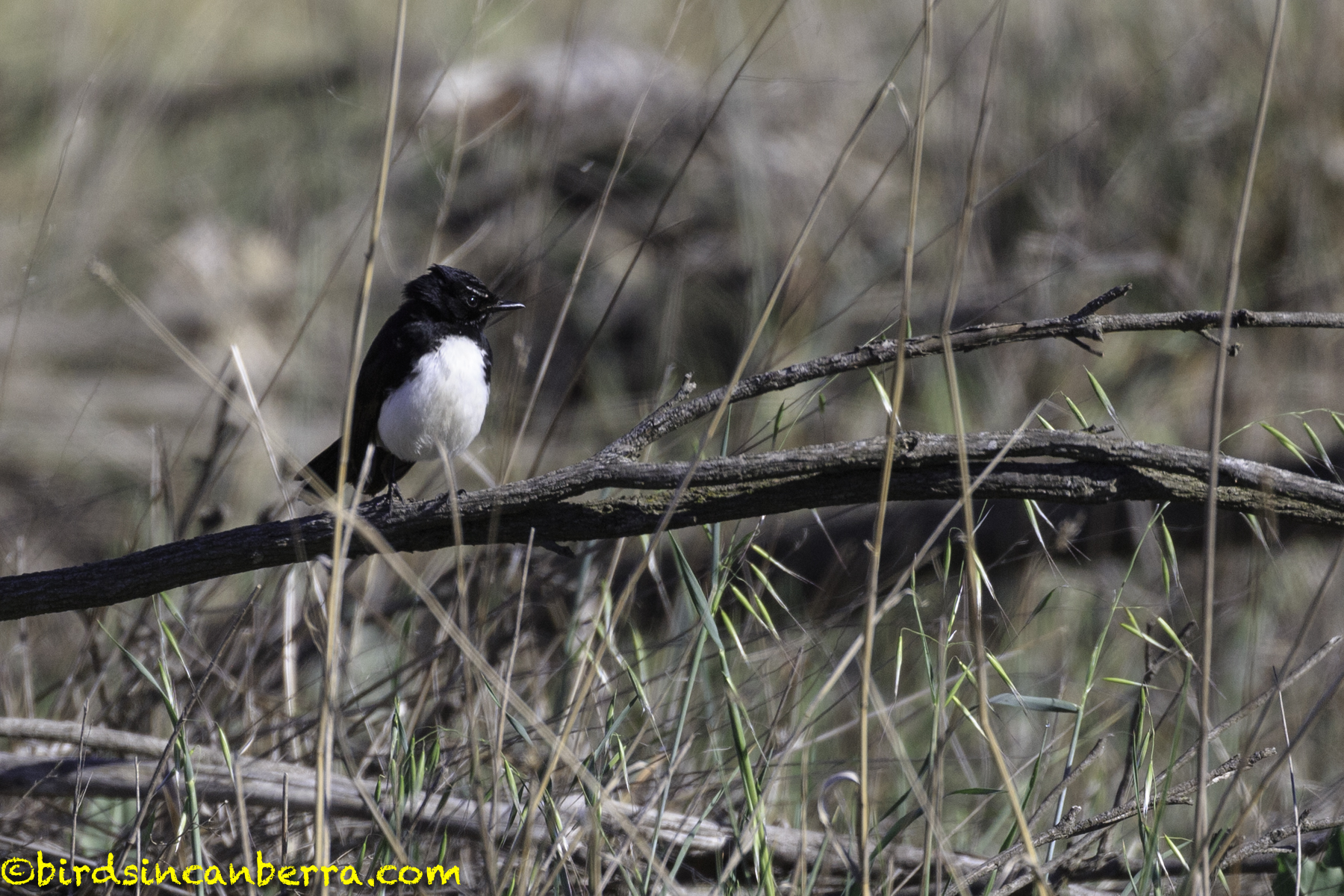I always enjoy a trip to Jerrabomberra Wetlands because the birdlife is so rich in an area with easy access and great watching locations. The wetlands are always worth a visit, with different locations giving a different view of the life to be found. This time I decided to park on Dairy Road so I could enter from the south-east side of the reserve. I am glad I took that route as almost immediately I saw a pair of Black Swans with a group of cygnets. With spring upon Canberra there are more baby birds as well as more nesting birds. A number of migratory birds have also returned. Canberra is really coming alive with birds so it is a great time to have a walk around different parts of Canberra observing the birdlife.
A good example of the birdlife at Jerrabomberra Wetlands
The Black Swans I referred to in the introduction was not the first bird I saw, that was a Red Wattlebird. Unfortunately, I had bumped the mode dial so the camera was on the wrong selection as I was trying to use what I thought was manual mode. The photo below was the best I had. The wattlebird was being so helpful, it was first on the ground near me, then on a low branch, then another. It eventually flew off, but it did not appear to be concerned about my presence.
As I said above, there were a pair of Black Swans with five cygnets. They were swimming at the southern end of the eastern pond. They all appeared to be feeding on weeds that were just below the water surface. The cygnets did not appear to be concerned about anything except eating. The older swans were also eating but generally seemed to be on either side of the cygnets keeping other birdlife away. Even though I was a short distance from them, the adult swans silently, almost imperceptibly, guided the cygnets away from me. There were no calls just a gradual movement away from where I was standing. I enjoyed looking at this group as these are such graceful creatures. It was also good to see a new generation of birds starting its life journey.
Between the Black Swans and me were a few tussocks of grass poking just above the surface of the water. On one of these was a Red-kneed Dotterel, photograph one. It stayed perfectly still while I was photographing the Black Swans. Even as I approached closer it remained on its small island. At some stage it must have decided I was close enough, as it flew to the other side of the pond. There was already a dotterel there but the new arrival did not interfere with the existing bird. Photographs two to four show the newly arrived bird moving northward along the side of the pond. You can see the mud on its legs where it has been walking.
There was a Purple Swamphen moving around the south-eastern side of the pond, photograph one. The bird seemed unconcerned by my presence. Later in the morning, near the southern pond there was another swamphen, photograph two. As can be seen in the photograph it was pulling at some reeds.
There were the near ubiquitous Superb Fairy-wrens, with a male an female in the reeds where I was initially at the south-eastern edge of the pond. The male was doing some morning preening. There were a number of males throughout the wetlands, obvious in their wonderful blue breeding plumage.
Following the path south of the pond, moving in a westerly direction, there was a clump of reeds on the right-hand side of the track. I could hear the call of an Australian Reed-warbler, with the occasional glimpses of the bird. I climbed a small hillock to get a better look down on the bird. This seemed to spook it as it went lower down on the reeds and deeper in. After I sat down it eventually came out a bit more. It was still moving between reeds, pausing to call, before moving again.
While I was looking at the warbler I noticed this Australian Magpie doing relays to feed its chick. It was moving continuously to feed the chick while I watched. The chick was normally quiet while the adult was away but when it was nearby the chick was constantly calling out, even if it had just eaten. In the first photograph you can see the red inside the chick’s mouth.
I have been trying to get a photograph of an Australasian Darter for a while, so I was happy to finally have a chance to take these photographs. The bird was a distance from me and appeared to want to keep its distance from me. It was moving south along the far bank of the pond before it turned around to head north again. It stayed reasonably close to the bank, being successful at least once during its return northern leg. My other photos show it turning the fish around in its bill to swallow it head first.
There were a number of Red-rumped Parrot pairs at the wetlands. Most significantly, were the last two photographs showing the male attending to a hollow where there was probably a nest. He did not go straight in but perched outside, waited a few minutes, then entered the hollow.
This appeared to be a young Australian Raven which had fledged but was still gaining strength and confidence with its wings. Like the juvenile magpie above it was calling out, with an adult bird occasionally returning to feed it. Its calls were more regular than the magpie in the nest. Photo three shows it making a call with no adult in clear sight. A red fringe in the mouth is just visible. Its body plumage is still a little downy.
There were several Willie Wagtails at the wetlands.
There was a group of Eastern Grey Kangaroos to the south-west of the eastern pond including this mother and joey. The joey already seemed quite large but was happy in the pouch.






